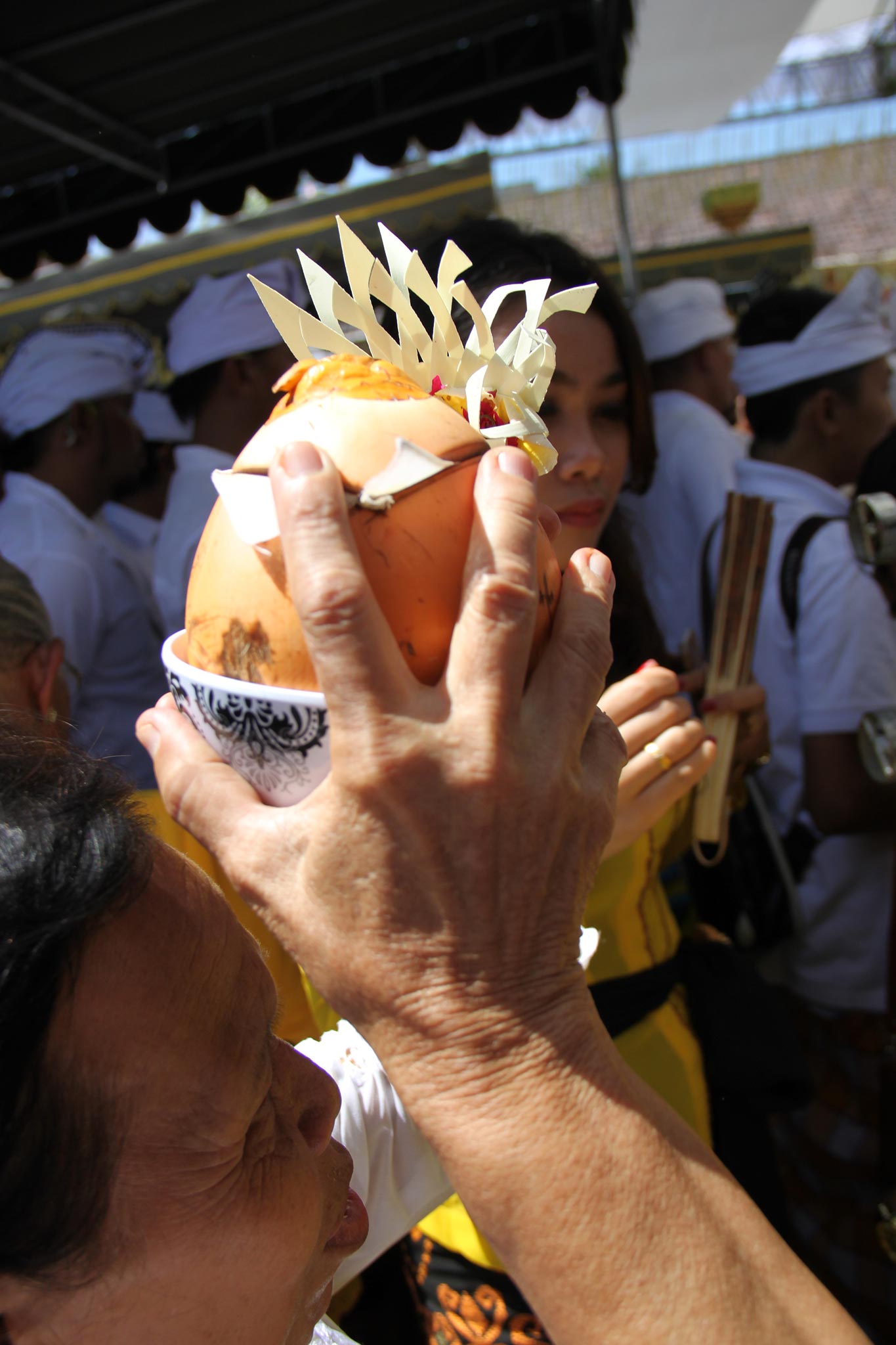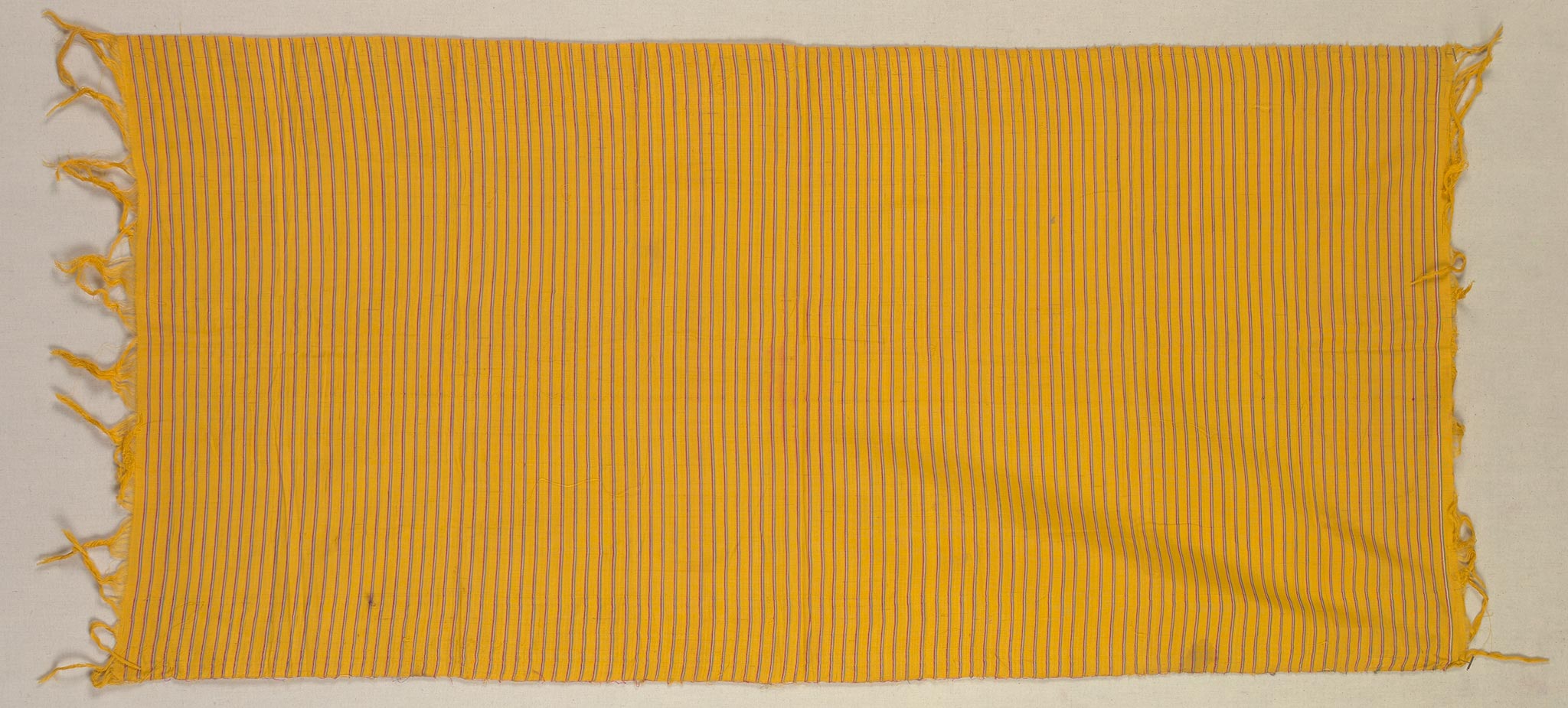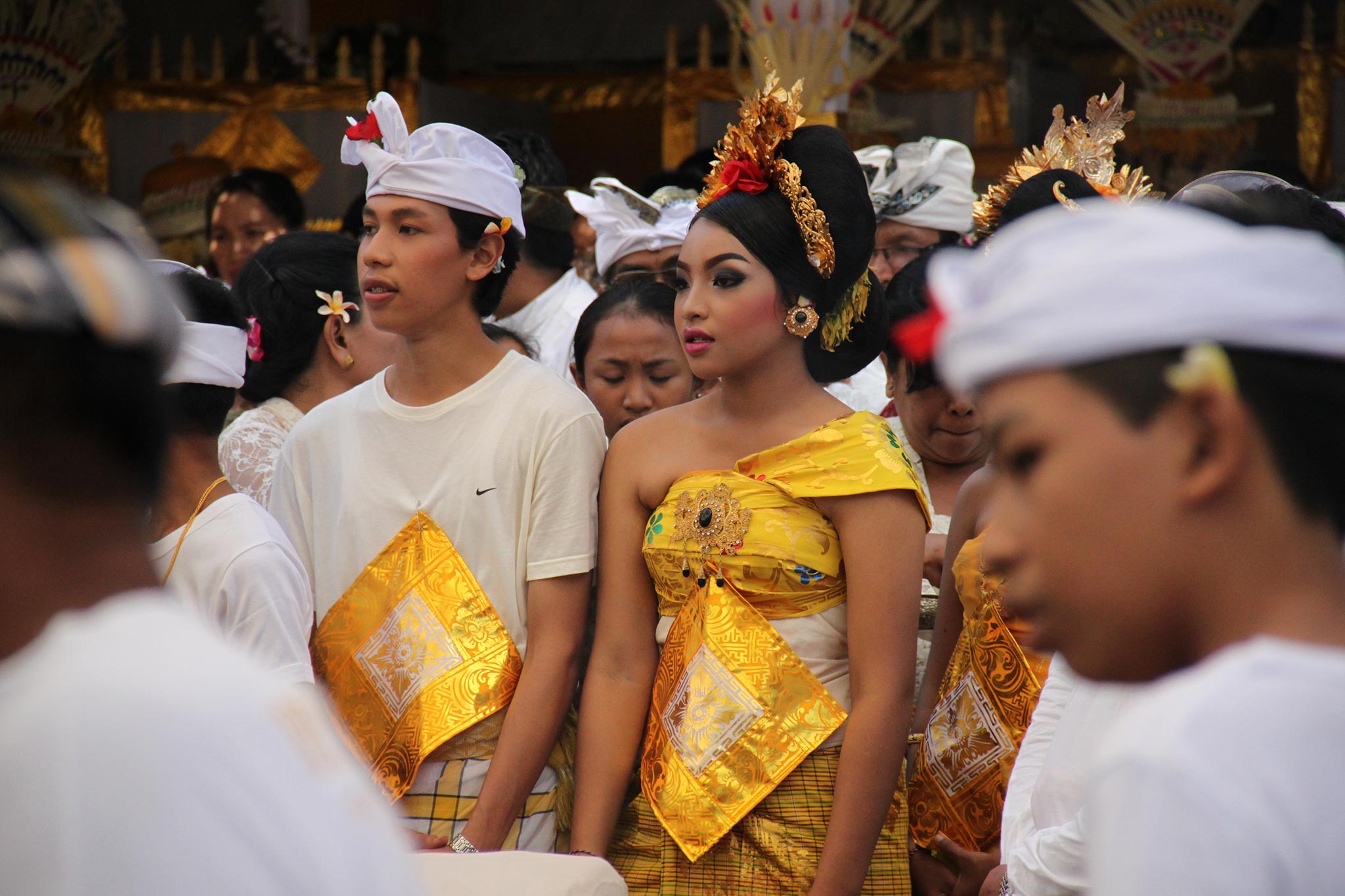Objects

A family member carries a yellow coconut in a bowl during a toothfiling, Ubud, Gianyar Province, Bali, Indonesia, 2016. Photo credit: Urmila Mohan.
Nyuh gading (yellow coconut)
During the toothfiling ceremony, the yellow coconut or nyuh gading serves as the container into which the participant spits her saliva and the filings. The coconut is later buried near the ancestral shrine in the initiate’s family temple. The filings are believed to have a latent power as part of the body that the initiate was born with and their burial also prevents misuse of the coconut by evil spirits.

Anteng, or woman’s chest wrapper for puberty ceremony. Batuan, Bali, Indonesia, 1937. Handwoven cotton, weft stripe. Courtesy of the Division of Anthropology, American Museum of Natural History, 70.0/8299. Donated by Margaret Mead.
Kordi Kuning
This chest wrapper, worn by girls during puberty ceremonies, is woven in a style called Kordi Kuning (where kuning means yellow). The yellow color suggests ripening vegetables and fruits, and is associated with fertility and prosperity. These same traits are believed to be transferred to the wearer as she undergoes this ritual and moves into womanhood.

A young man and woman wear gilded chest covers as they await their turn for toothfiling, Ubud, Gianyar Province, Bali, Indonesia, 2016. Photo credit: Urmila Mohan.
Kakasang
This square-shaped textile is called kakasang. During the process of toothfiling, initiates may wear auspicious colors of yellow, white and green, and are covered with magical cloths that protect them from evil spirits. The kakasang is worn on top of the chest to add a layer of material protection as the chest is believed to be the seat of the soul and hence vulnerable to demonic forces during the ceremony.